Capetown: Day 9 we left Ankasa and drove to Capetown. I had mentioned to Ibrahim that we would like to see the old “castle”, remembered more today as a slave prison rather than as a castle. The more privileged whites lived on the upper floors in what was luxury in the slave trading days. The Castle was the main site of the British controlled slave trade out of Africa for almost 150 years, from 1664, when Britain gained control of Capetown to 1807 (over 50 years before our Civil War) when Britain enacted the Slave Trade Act which discouraged the slave trade. In preparation for my birding trips, I often read a book about the country to which I am going. In the case of Ghana, I read the book, “Homegoing” by Yaa Gyasi. Her book is characterized in the reviews as “historical fiction”. It has the feel of a book which tells the truth, but with fictionally imagined characters. A very interesting book. I unhesitatingly recommend it for anyone having an interest in Ghana.
When we arrived at Cape Castle we were assigned a guide who spoke with us before conducting the official tour. I told him I had read Homegoing by Yaa “Geeasi” (I pronounced it with a hard g as in “George”). Our guide stopped me to correct my pronunciation of her last name, which begins with a soft g as in “girl”. He seemed familiar with the book so I asked him if it was an accurate portrayal of the history of the Castle. He had read the book and he said it was an accurate portrayal. I had taken a quick look at the lower levels of the Castle where Africans were held as prisoners before being shipped to the Americas and the Caribbean to be sold as slaves. It was very depressing to see and imagine their suffering. After a short time, I left the tour and sat on the ramparts of the castle overlooking the more beautiful Atlantic Ocean. Here are some of the pictures taken at Cape Castle:

Because of the Irish connection…
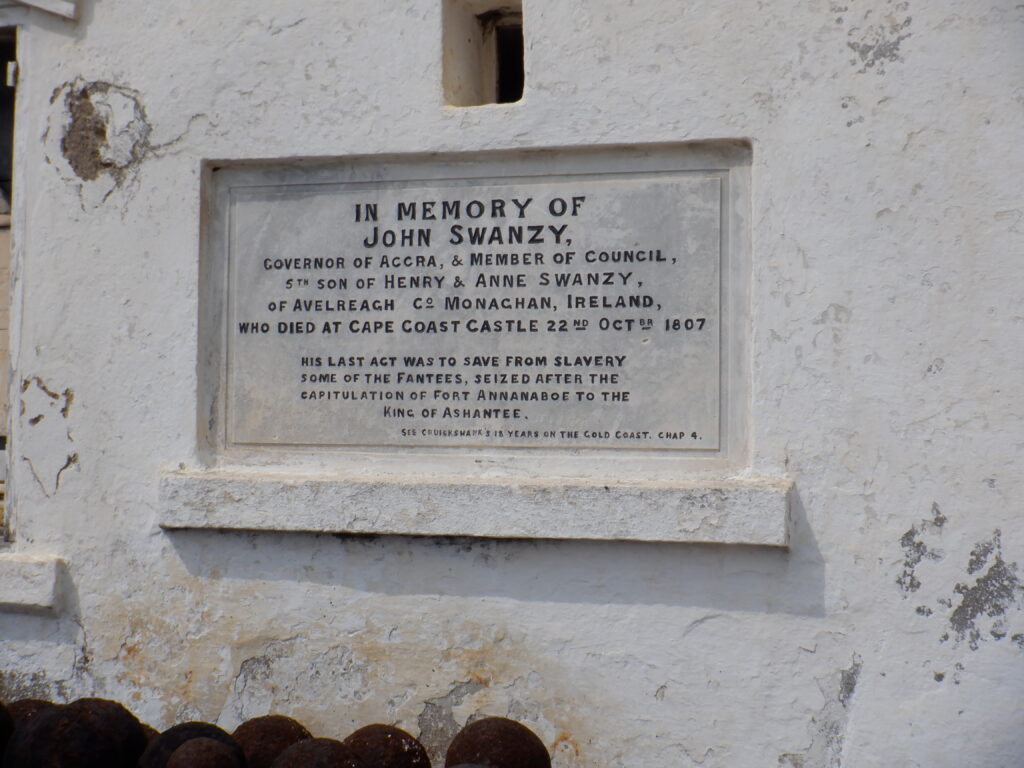
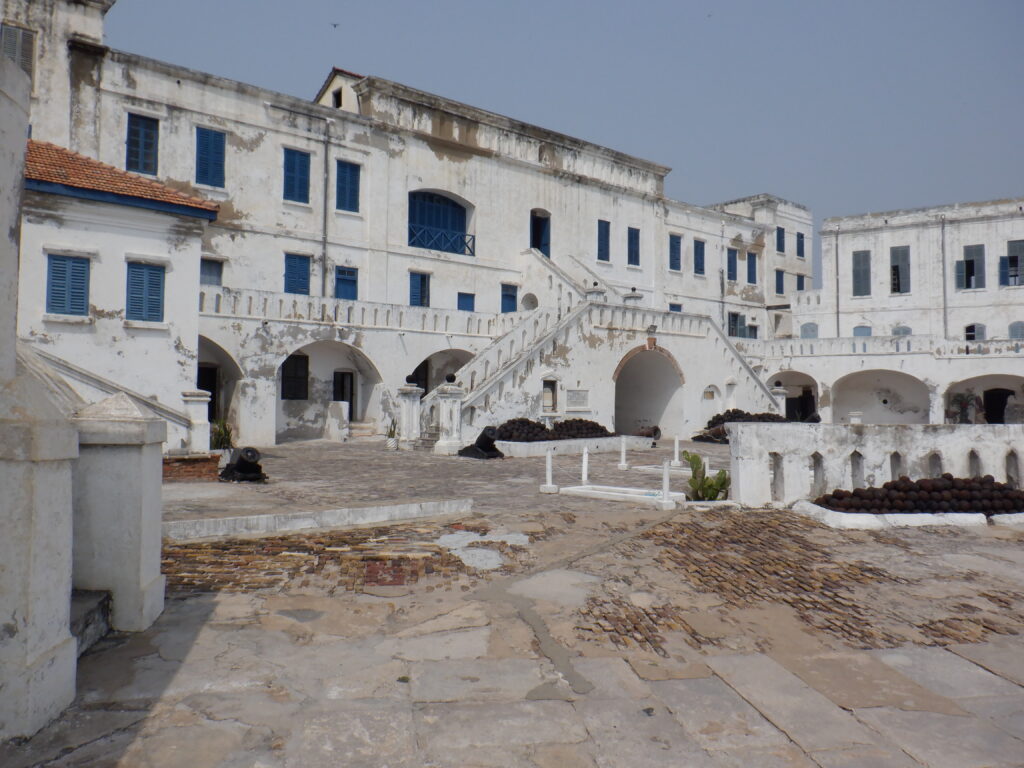
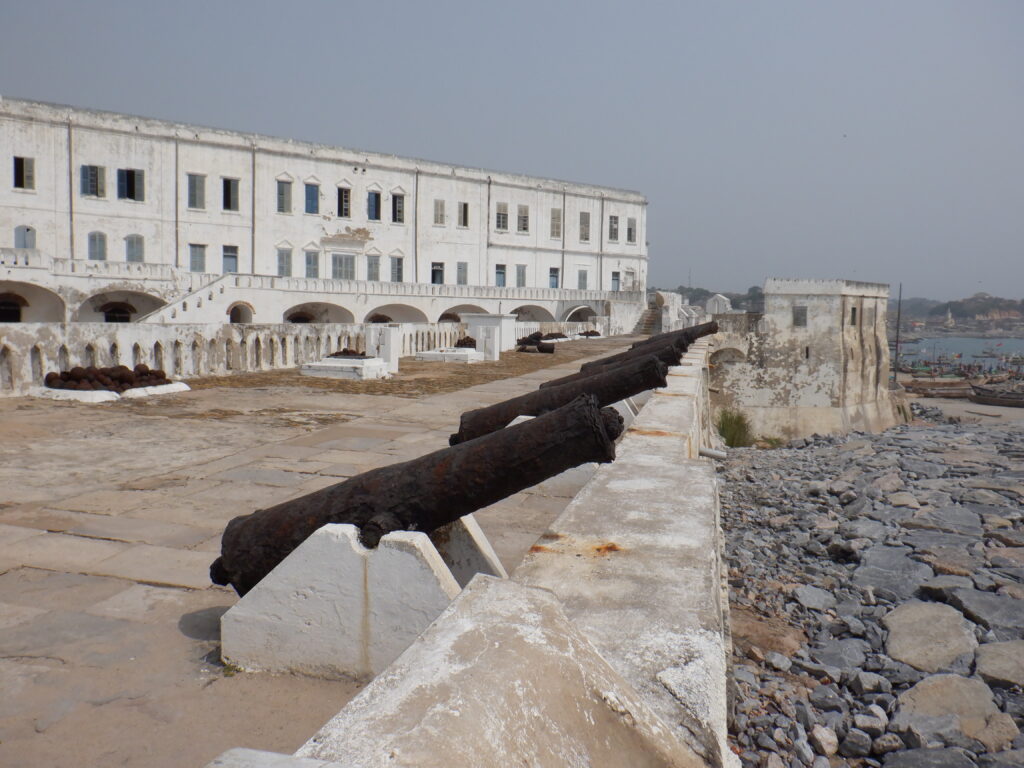
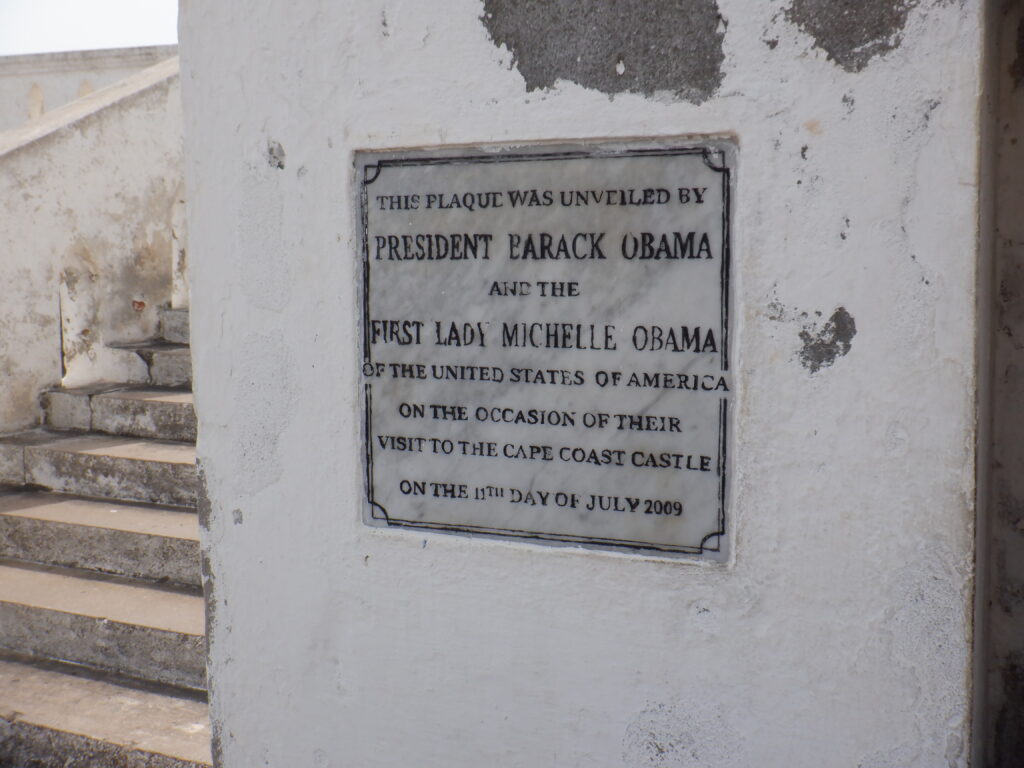
[Clarissa and Adam’s note] The following photo is of the prison below the castle. This is where many people were imprisoned before crossing the Atlantic in the process of being sold as slaves. The center gutters were for human waste that was piled high in the prison at its time of use. The smoother floors aside the gutters throughout the rooms show the waste, now hardened into rock, where humans were crammed in these extremely over-crowded and under-cleaned areas. The sight and thought of this area was heartbreaking.
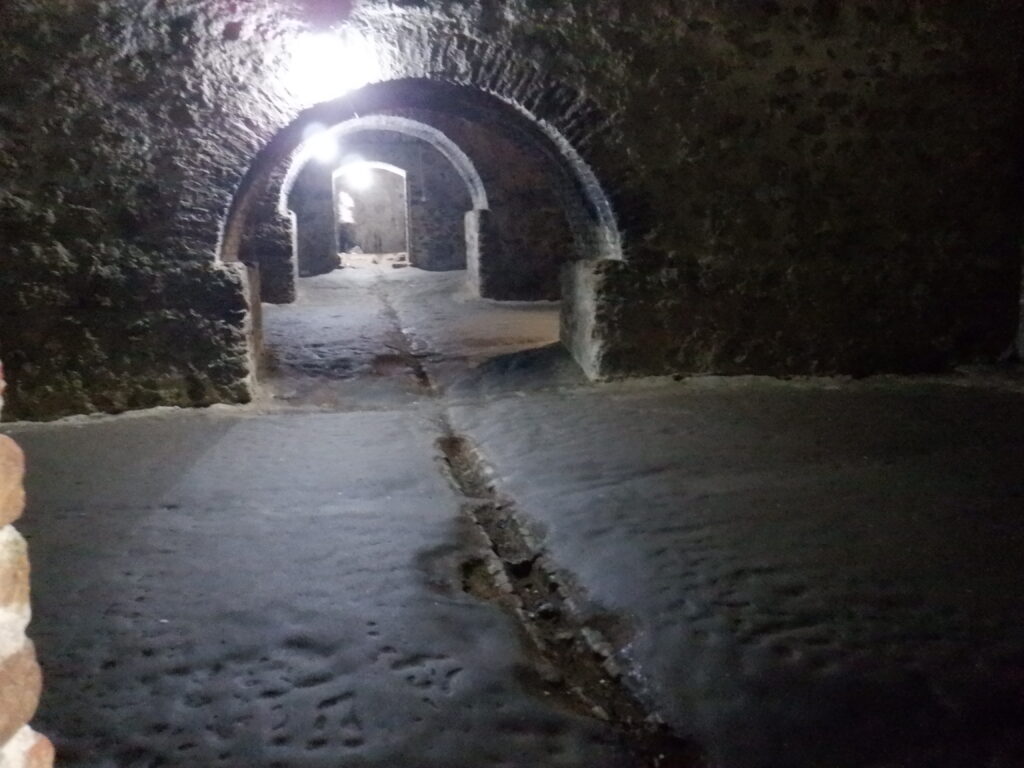
The following photos are views from the upper floor of the castle.
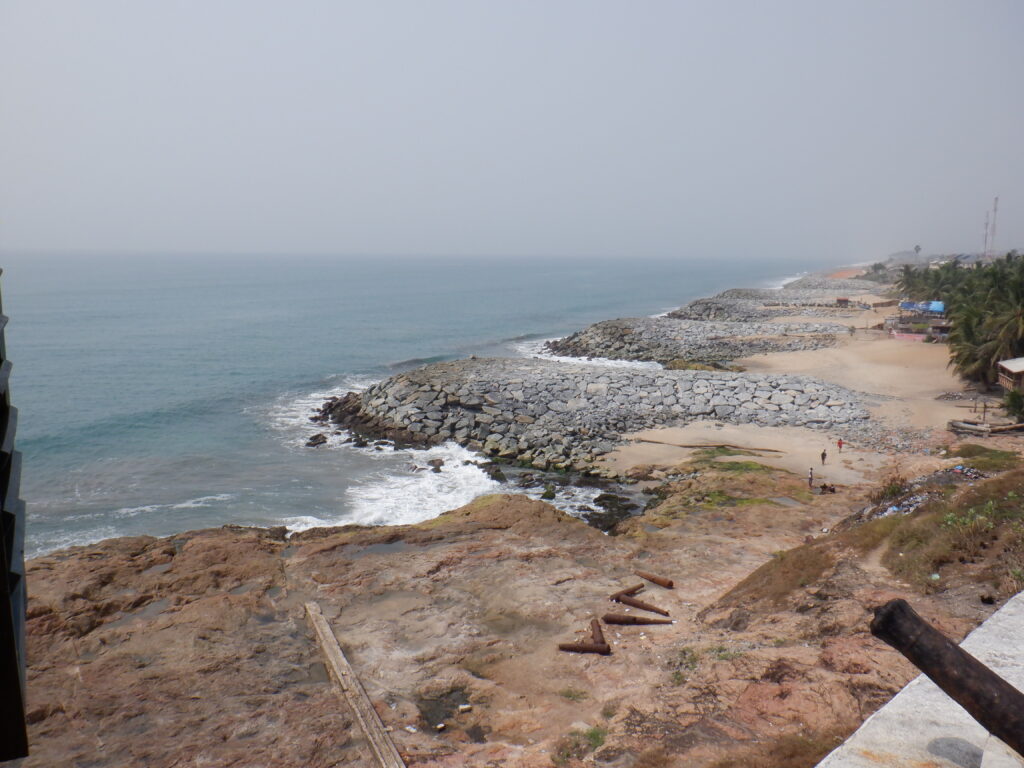
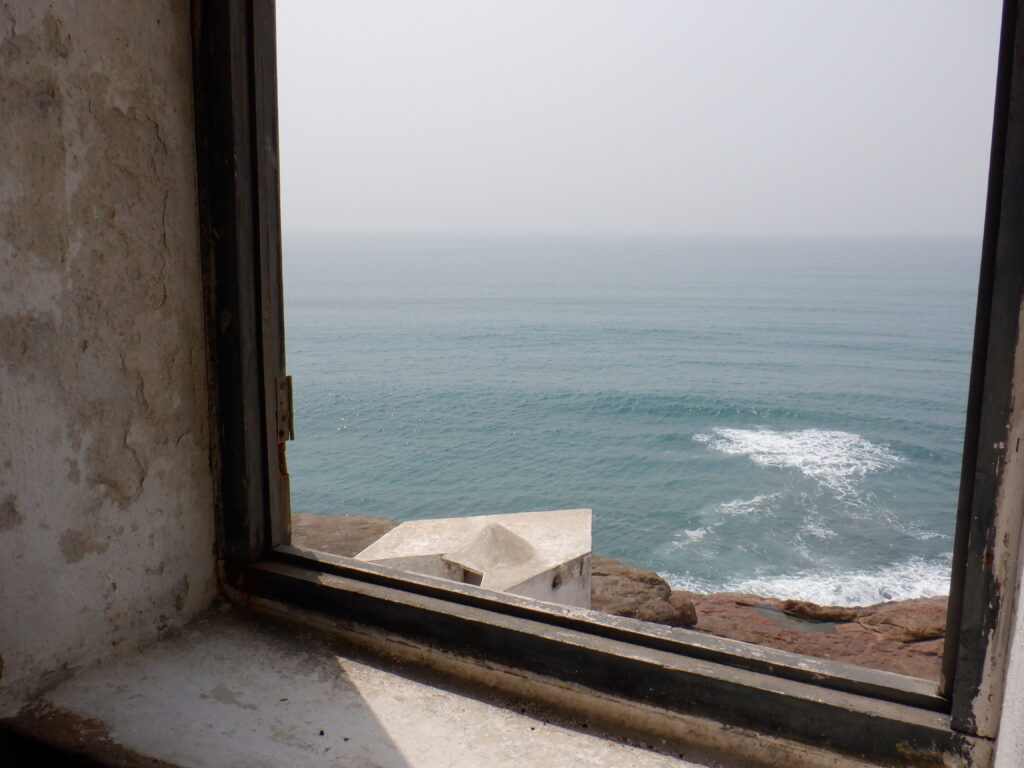

The Picathartes (or Rockfowl)
From Cape Coast we undertook the seemingly interminable drive to the small village of Bonkro, which is somewhere between Kumasi and Accra. This is the site to which Ashanti takes its guests who wish to see the iconic and rare White-necked Picathartes, or, in strictly English, White-necked Rockfowl. Bonkro is not on a major highway. The Rockfowl was the bird I most wanted to see in Ghana. It is one of the two species in the Picathartes family of birds. It was the 6th new family I hoped to see in Ghana, having seen the other 5 families before on the trip. In searching the internet for some way of explaining exactly where Bonkro is I came across a wonderful description of one birder’s experience which so closely reflects the experience Adam and I had, and is so well written, that I cannot resist quoting at length.
This is from a blog entitled “Redgannet – a Photographic diary of a Birdwatcher Travelling the World so You don’t have to.” This was posted on April 2, 2014, almost 10 years ago.
“This afternoon’s visit to the West African forests was one of the most hotly anticipated trips that I have done in a long time. [To which the empty nest birder adds a fervent “ditto”}. I was going in search of a White-necked Picathartes and had asked a local guide [name omitted from this quotation] to help me. To my mind, Picathartes are birds of legend, seen only by the luckiest, most dedicated bird-spotters. They are endangered and shy but there is a knack to finding them. They return to their nests each evening and can reliably be seen by waiting quietly for dusk within sight of the nest. It has been shown that whist they are secretive during the day as they forage deep in the forest, they are bolder around the nest and one such place exists near Bonkro Village. . . .
“If you can picture the Millenium Falcon, having nose-dived into a jungle, you pretty much have the scene as I saw it. A large slab of rock jutted from the ground at about the same angle that an out of control spaceship would have come to rest and an earthen nest similar to a swallow’s but bigger, hanging from the underside. The approved method of White-necked Picathartes watching is simply to sit quietly and wait for the birds to return to their night roost, so I picked a comfortable looking spot and sat. [in the empty nest birder’s case, 3 in a row with about 10 feet between each, Ibrahim on the left, the empty nest birder in the middle and Adam on the right] It became clear that the spot was not as comfortable as it first appeared, but the birds did not show as promised. . . .The guide tapped my toe and pointed in the opposite direction from which I was expecting the bird to come.
The Millenial Falcon (Nesting Rock of the Picathartes) as we saw it, had 2 nests hanging on the underside of the Millenial Rock, or Nesting Rock:
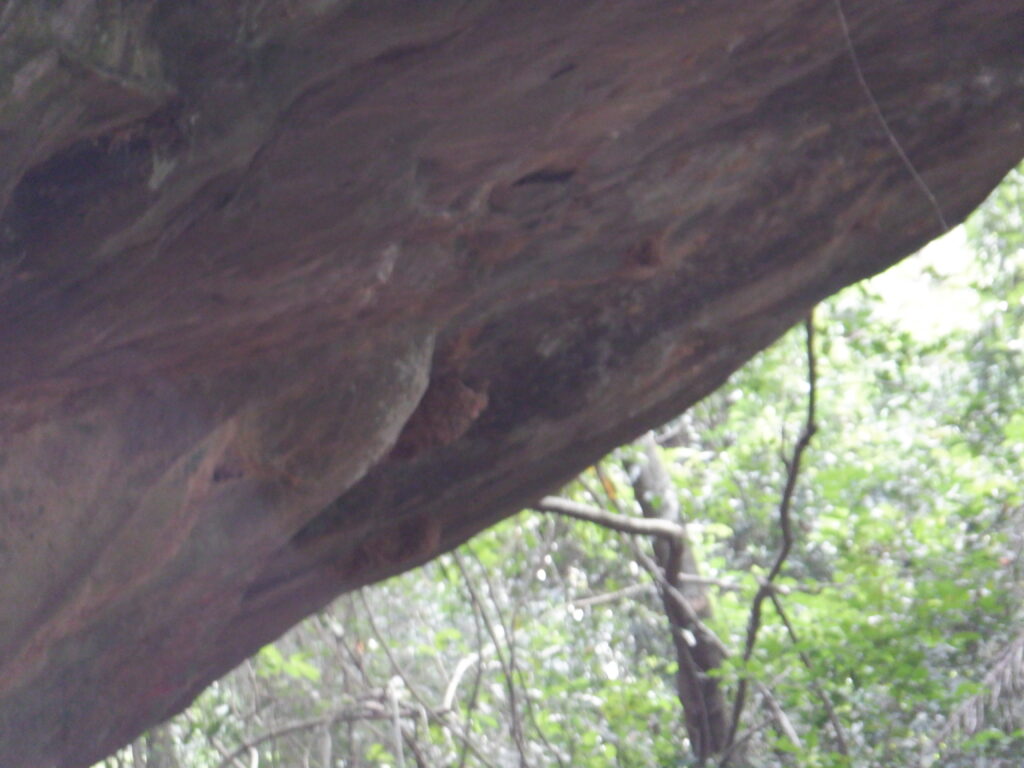
Diverging from RedGannet’s experience, in our case first one, then two, then three Picathartes came to the site on foot. Their feet were at the end of long, powerful, spring-loaded legs that allowed them to move like kangaroos, which they each did for several minutes. Notwithstanding the dim light of dusk, Adam was able to get decent pictures of the White-necked Picathartes that bounced from rock to rock in front of us:
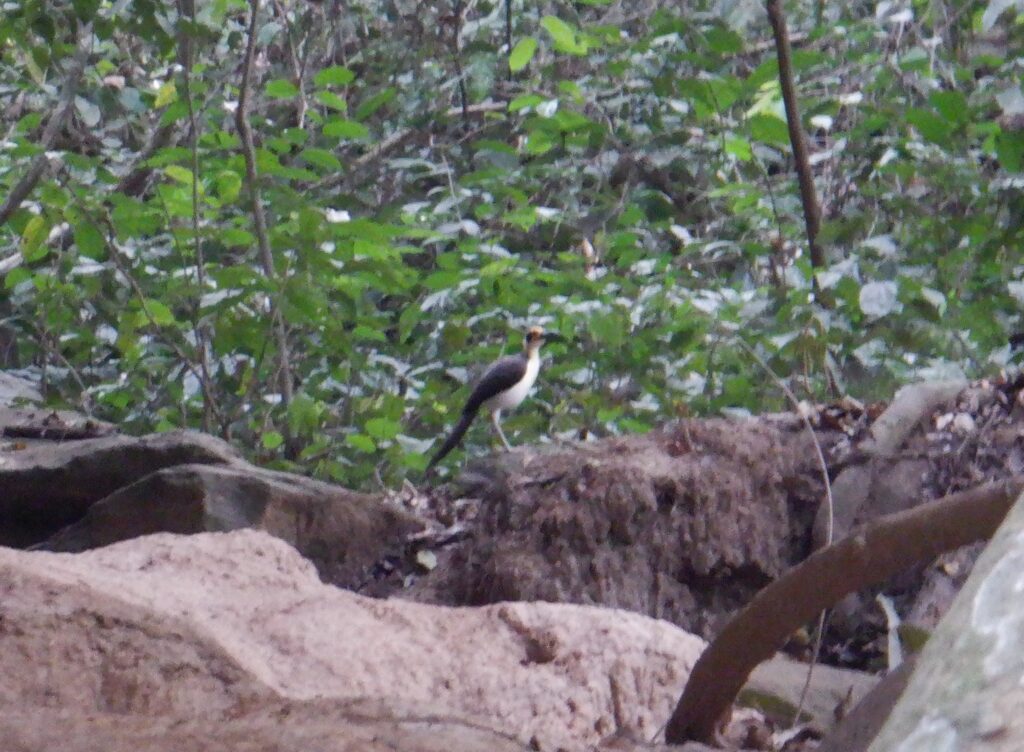
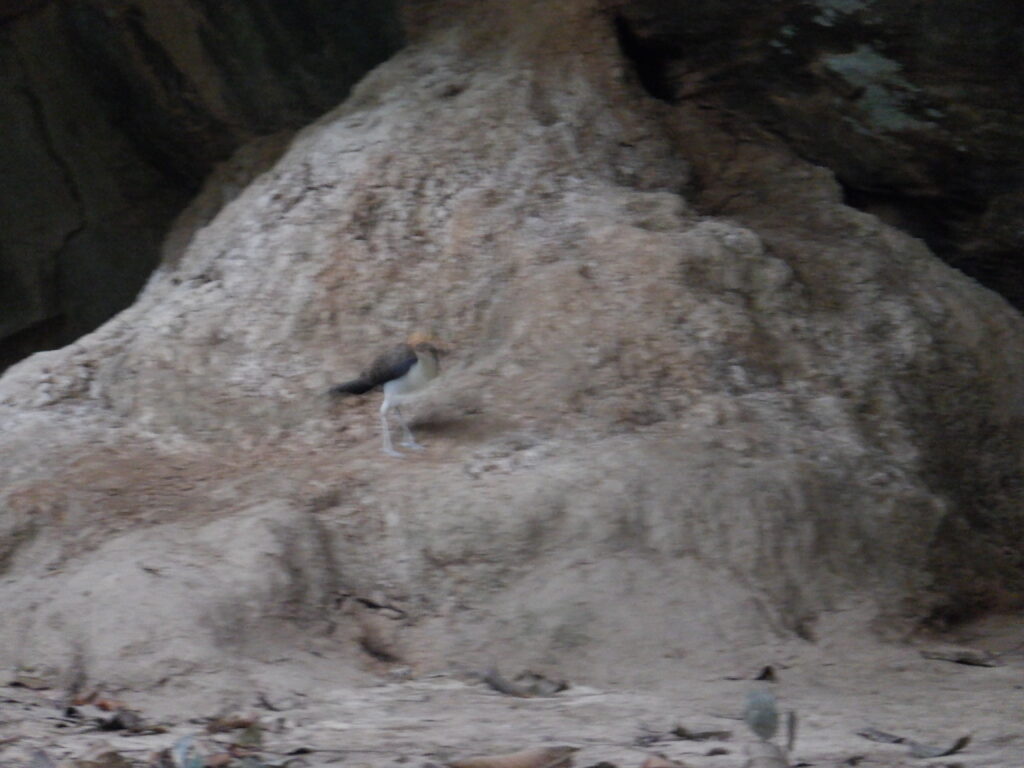
Wings Birding Tours in its on-line ad for its Ghana trips describes the anticipated experience as follows:
“Rockfowl site: Our ground agents [that is, Ashanti African Tours, which Adam and the empty nest birder employed] have a community project here and even built a school for the local community. Locals are employed as guides, and we shall meet these in the village where we park. From here, it is approximately a 30-40 min walk to the Rockfowl site through farmbush and then forest along a mostly level trail. The final five minutes or so, however, are quite steep and potentially slippery. Some people will find a walking stick beneficial here. We then sit on a bench overlooking the nesting/roosting sites for the Rockfowl and wait for the birds to appear. This may take a long while, and participants should be able to sit quietly and still for that time.”
The walk in darkness back down the steep incline leading to the rock was very difficult for me. Ibrahim, who was barefoot at this juncture, (why, I don’t know) helped me down this portion of the descent. Without his physical help, and the “walking stick” that was found and given to me as we approached the steep ascent, I probably would have had to try to crawl back down. He re-enforced my impression of the Ghanese as very kind people, certainly with respect to the elderly (and I am soon to be 90).
After the steep part of the descent, Ibrahim and I spotted a dark bird in the underbrush. He was very, very excited to identify it as the first new lifer he has seen in Ghana for several years, a rare African Pitta.
I retired that night a tired man, but happy “as a lark”, because I had accomplished my main goal of the trip: seeing 6 new bird families in the company of kind and interesting people. I hope and wish they can say the same of me. Our living quarters at Bonkro had no air conditioning and no internet, but we were comfortable in our “Guest House” at Bonkro.
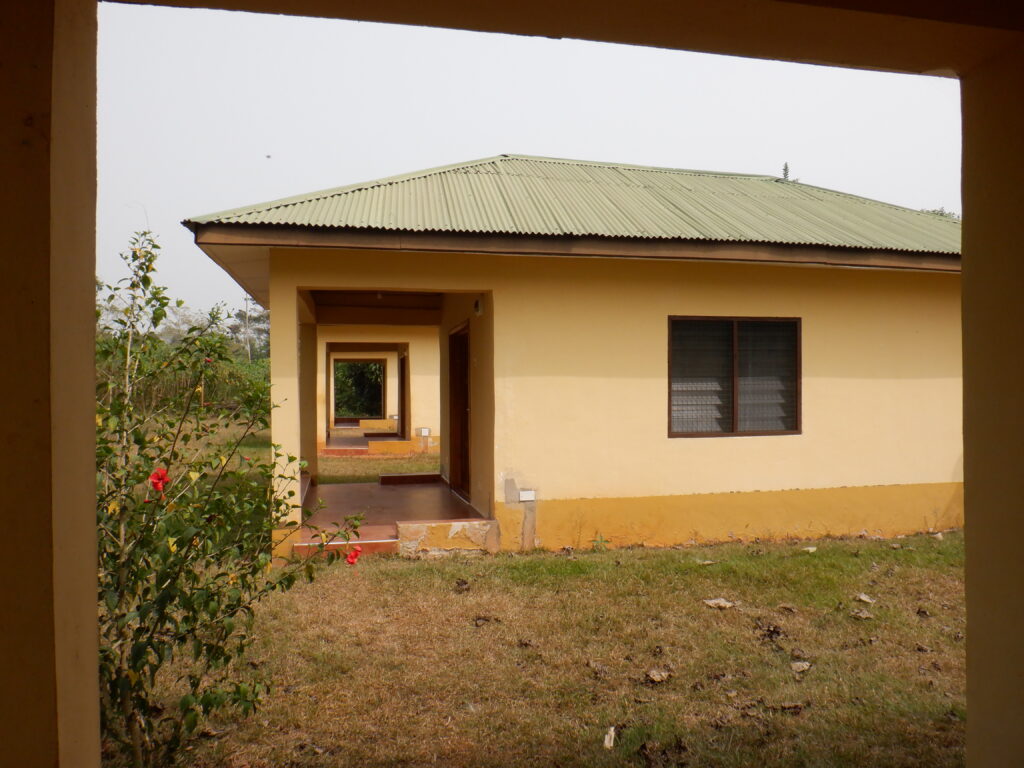
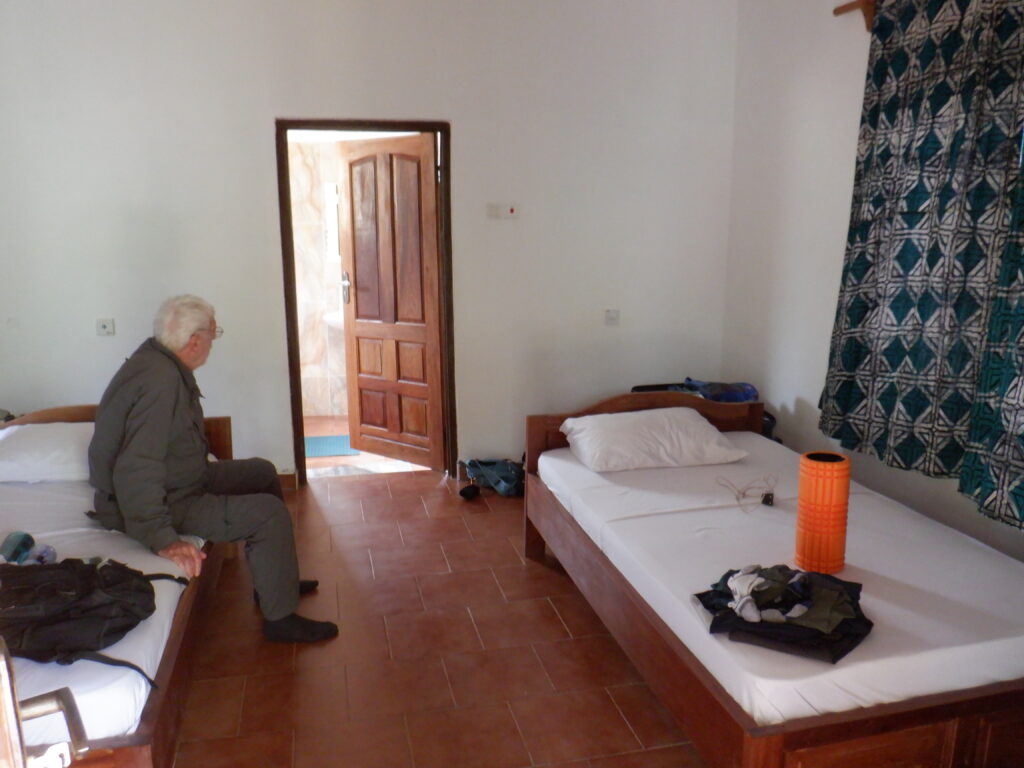

The balance of the trip was anti-climactic: just getting home. The road trip from Bonkro to the Accra Airport was incredibly long due to the traffic around and in Accra. The experience we had in Ghana was memorable because the people of Ghana were kind and cordial without exception. Adam saw about 190 birds, almost all of which were new to him. Don saw 120 new species to bring his total lifetime worldwide species list to 3,930. He saw all 6 species within families that were new to him, to bring his family list to 229 of the Clements list of families, which totals 250 extant families, plus 1 extinct family.
